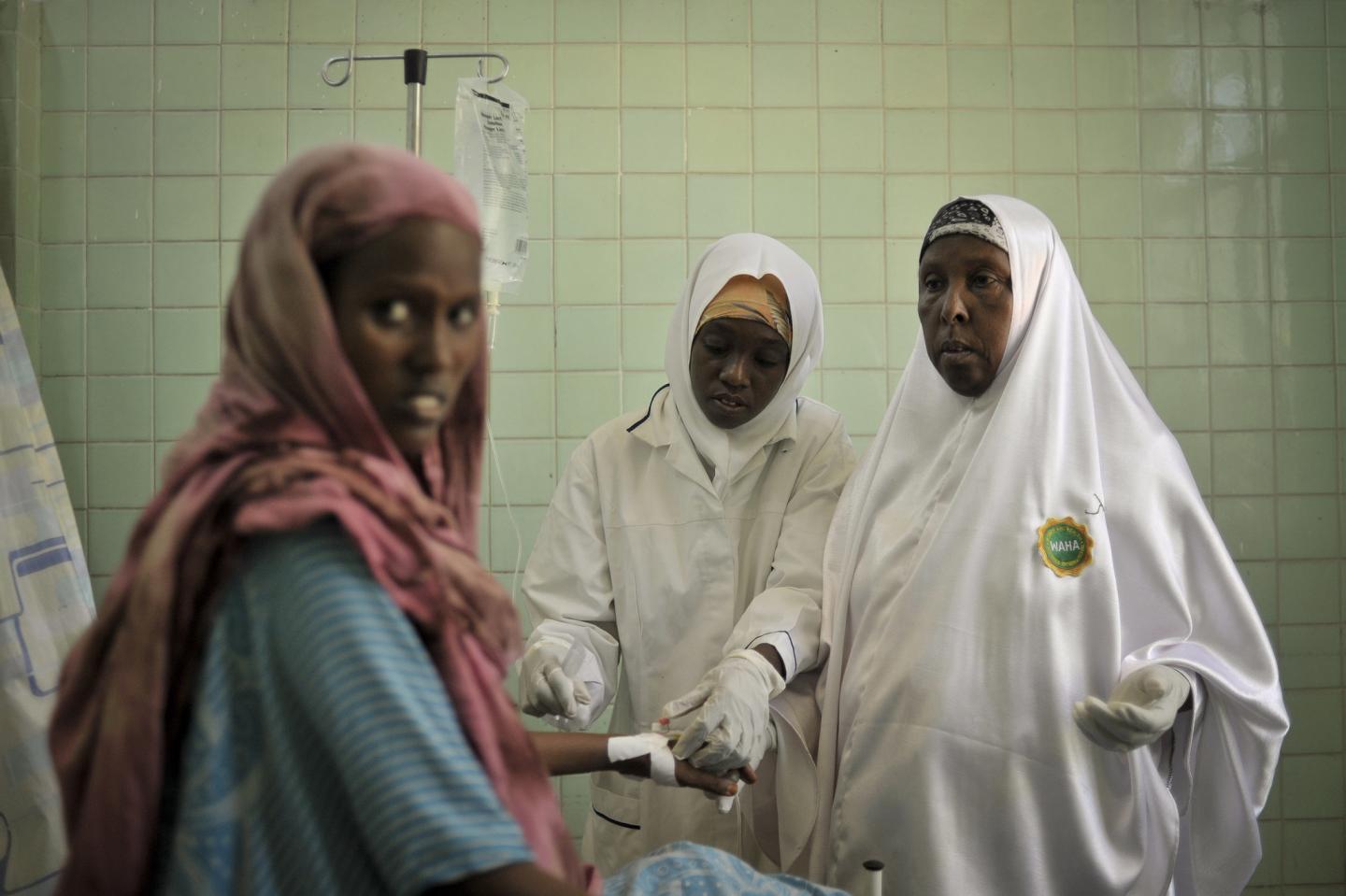The research demonstrated critical spread rates of 5 types of viral hepatitis; according to the results, immediate action should be taken by the international community

Credit: UN Photo/Tobin Jones
Viral hepatitis means liver inflammation caused by viruses and is among top-10 mortality factors in the world. It is passed with contaminated food and water, through contact with infected blood, via common use of household appliances such as manicure or shaving sets. There are numerous viruses that can cause this disease. Some of them, such as hepatitis A virus, can be fought with efficient vaccines, while some, such as hepatitis C, are almost untreatable with medicinal drugs. Due to all these factors different types of hepatitis are widely spread, especially in Central Asia and Africa.
“After my graduation, I have been working with Internal Medicine Hospital in Somalia under my beloved Professor Osman Dufle. During my work, I have realized that after the collapse of the central government in 1991 the research studies on liver diseases and others were declined. Hence, I started my researches which finally brought me to Russia for my specialization. There I analyse molecularly the hepatitis in my country thorough reviewing of earlier hepatitis studies in the country,” said Mohamed Hassan-Kadle, author of the study and member of the Center for Liver Studies at RUDN
RUDN medics were the first to gather together scattered data on hepatitis morbidity in Somalia. Numerous studies have been dedicated to the spread of particular types of hepatitis in this country, but this is the first work to describe the rate of viral hepatitis in Somalia in general.
“There is no state program in Somalia to monitor and control hepatitis or prevent this disease. Our study and the obtained data may help launch such initiatives on the state level. We expect to raise awareness among the public, health care professionals, and politicians,” said Mohamed Hassan-Kadle, author of the study and member of the Center for Liver Studies at RUDN
At the initial stage of their research RUDN medics found out 504 studies about the spread of hepatitis in Somalia. After careful selection 29 works were chosen for analysis. These studies contained data on hepatitis morbidity in all age and social groups including pregnant women and infants less than 1 year old. Using mathematical statistics methods, medics obtained disappointing result. 18.9% of Somalia residents were infected with hepatitis B. According to the World Health Organization, if a disease is spread across over 5% of populations it is considered an endemia. To compare, people with hepatitis B account for 4% of population of the world and 9% of Africa. The numbers for hepatitis A and E are much higher – 90.2% and 88.2%.
“Our research showed that all types of viral hepatitis are present in Somalia. This should become a burning issue for the country’s health care system. Measures should be taken immediately. In particular, excessive levels of hepatitis A and B morbidity may be reduced with available vaccines,” added Pavel Ogurtsov, a co-author of the study, and head of the Center for Liver Studies at RUDN.
“Additionally, our research recommended further studies are needed to fully understand the population factors underlying the high prevalence of all forms viral hepatitis, particularly in underrepresented regions and among adults, children, blood donors and high-risk groups, to offer better perspectives on all forms of the viral hepatitis burden in Somalia.” said Mohamed Hassan-Kadle.
###
Media Contact
Valeriya V. Antonova
[email protected]
Related Journal Article
http://dx.




